Despite my recent daily-carry conversion, I love revolvers. I also think revolvers chambered for rimless pistol cartridges are downright neat. And, it just so happens, I am a long-time fan of the 10mm Auto. So it was no surprise that I almost jumped out of my seat when I opened an email from Mike containing a press release from Ruger. The Ruger 10mm GP100 Match Champion had just been released! Barely ninety seconds passed before I emailed my contact at Ruger…
the Ruger 10mm GP100
The Ruger GP100 has gradually been working its way to the forefront of my revolver consciousness. Since starting this blog I’ve moved from thinking of the GP100 as an “also ran” to viewing it as the best duty-sized revolver on the market. I’ll go one further and say that if I were looking to replace my gun to ride the river with, it would probably be with a Ruger. The release of the 10mm GP100 has me more excited than ever about Ruger’s flagship revolver.
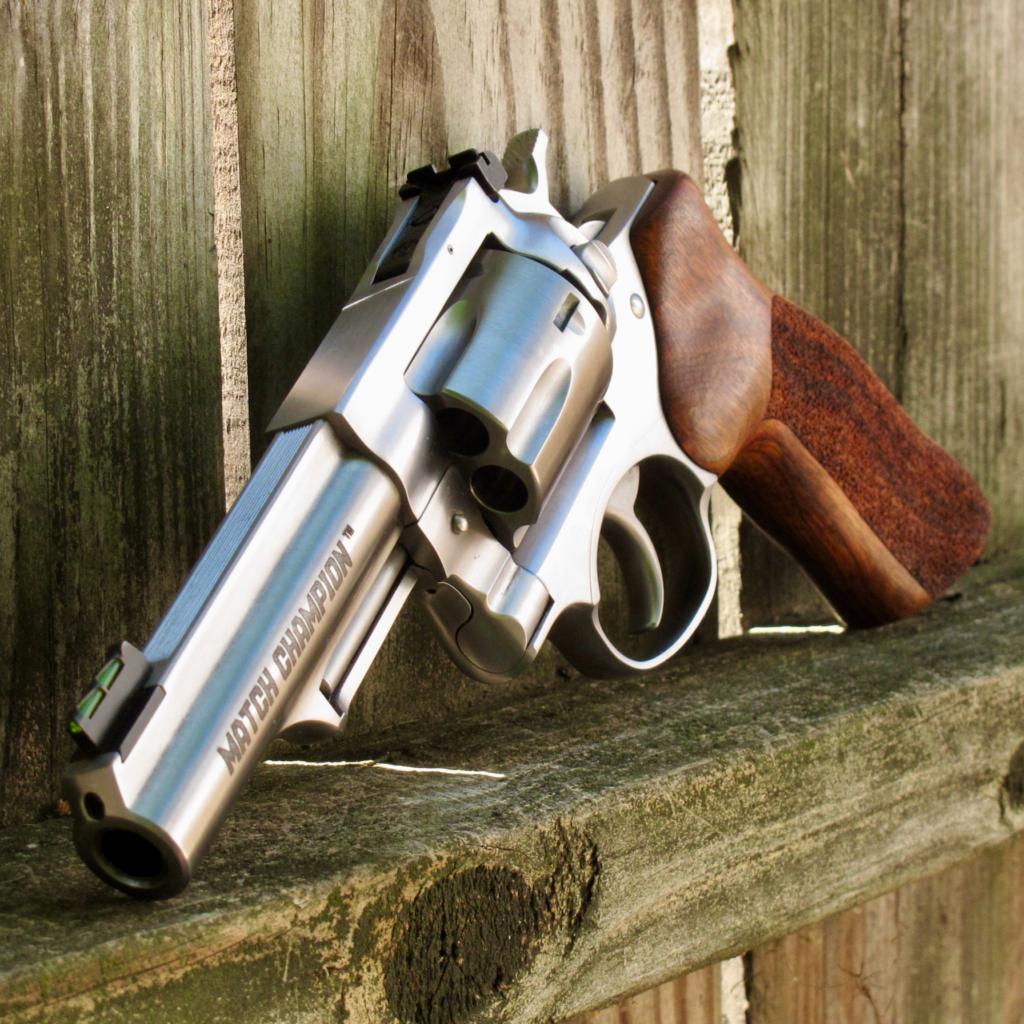
The Ruger 10mm GP100 begins with the usual Match Champion touches. It is built in all stainless and sports a 4.2″ barrel with a half-lug and a recessed muzzle crown. The grips are the same excellent grips worn by the other Match Champion models. The sights are a fiber optic front and an adjustable rear blade. Obviously it is chambered in 10mm Auto, and this is where things start to get interesting.
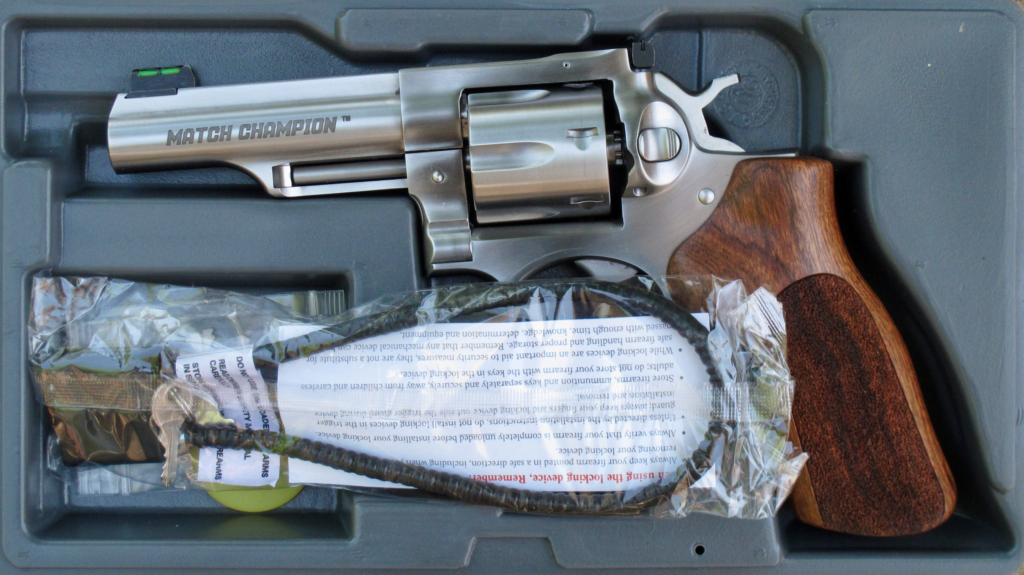
The 10mm GP100 Match Champion chambers six rounds of 10mm in a medium-large frame revolver. I admit no small amount of surprise when I realized what Ruger had managed to pull off here. In the past Smith & Wesson has manufactured a couple of 10mm revolvers: the 610 (which I have owned) and the 310 Night Guard. These six-shooters are built on Smith’s large N-Frame. Ruger put six into an L-Frame-class revolver. That alone impressed me!

The last Ruger product I spent significant time with was the .357 Magnum Match Champion. Naturally this invites a bit of comparison between the two. I encourage you to go back and read that review to get a feel for my history with the GP100-series. The Ruger 10mm GP100 has several big differences from the .357 model. I’m happy to report that almost every change I have noticed is a correction of something I had previously been unhappy about. I doubt Ruger was reading RevolverGuy for design tips, but regardless I’m happy to see some issues corrected!
Visible Differences
My biggest concern with the .357 version was the rear sight pin that kept walking out. Many of you reported similar issues with your Rugers. The Ruger 10mm GP100 has a roll pin holding the rear sight assembly on rather than a simple friction-fit pin. I am surprised that I’ve yet to see another reviewer comment on this important change. I hope the roll pin finds its way into other revolvers in the GP100 lineup. I have not fired this gun enough to ascertain its effectiveness, but I will let you know what happens.
As you may remember, I wasn’t thrilled with the front sight on the .357 Magnum Match Champion. The front sight on that version featured a very large, melted fiber dot. This made it hard to take precision shots. The front-sight blade on the Ruger 10mm GP100 is drastically different. First and most importantly, the dot is recessed into the blade. This creates a somewhat more refined sight picture. I like this sight much better than the original. Personally though, I still find the fiber optic distracting and will still consider replacement with a gold bead. The other change with the front sight is the the protective shrouding over the fiber optic rod. It is still there, but in a much more visually interesting arrangement.
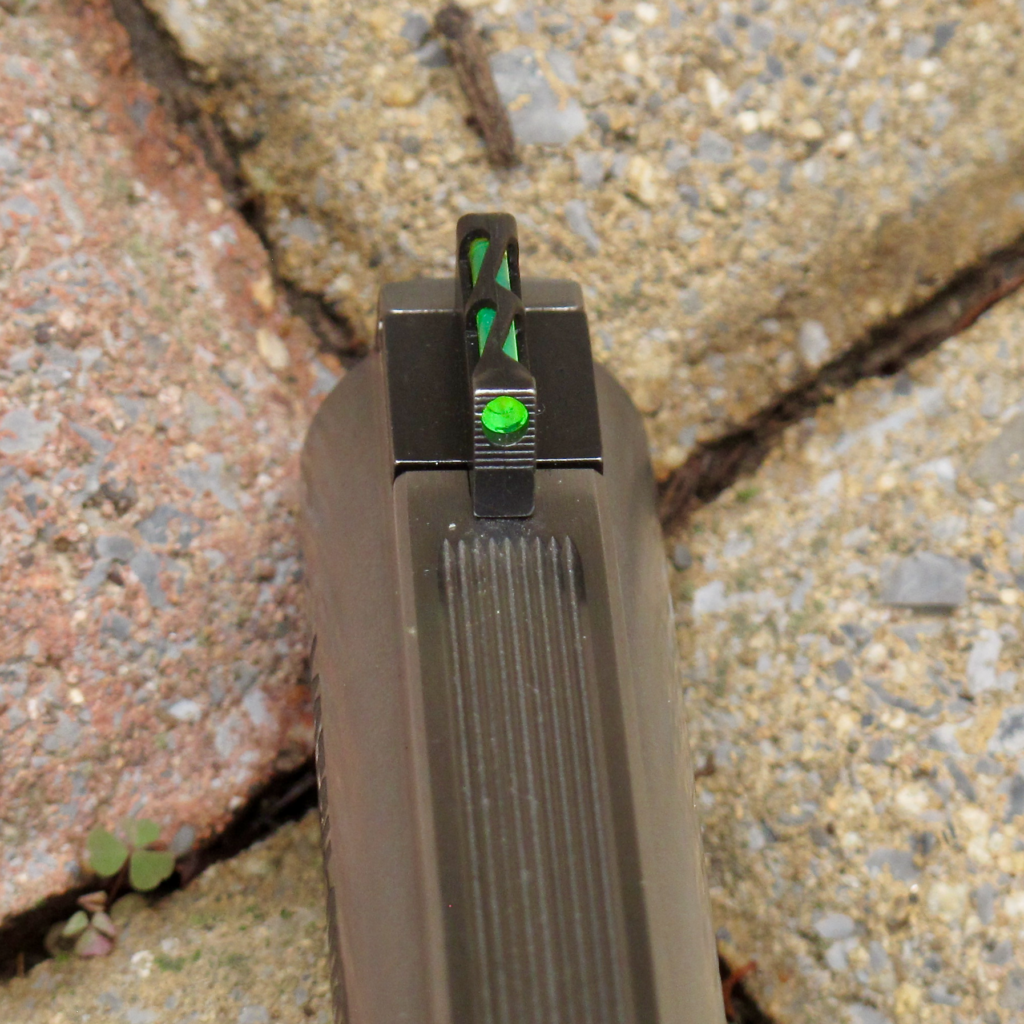
The most visually obvious change to the Ruger 10mm Match Champion is the barrel. Rather than the slab-sided barrel with flats milled on each side, the .40 caliber tube is round. This is probably a necessity; milling the same flats on the barrel would probably have made it too thin for the larger bore diameter. Another change necessitated by the bigger 10mm Auto cartridge: the cylinder is not tapered. All of these changes are fine with me. I find this revolver more visually appealing than the somewhat radical-looking .357 Match Champion.
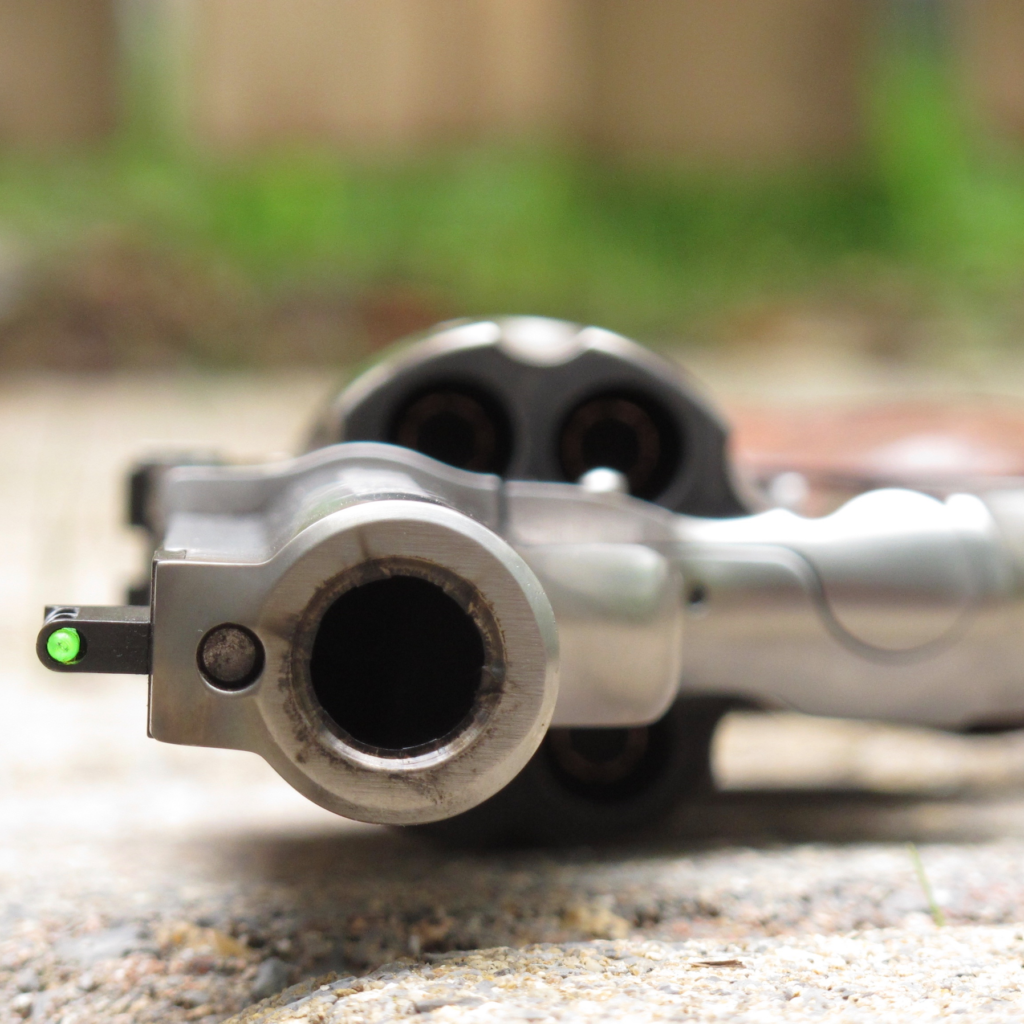
There is one other difference that I find interesting. The forcing cone is different from any other I’ve ever seen. Rather than being round, the exterior surface of the forcing cone is hexagonal. I imagine this simplifies a machining process or eases assembly, but I don’t know.
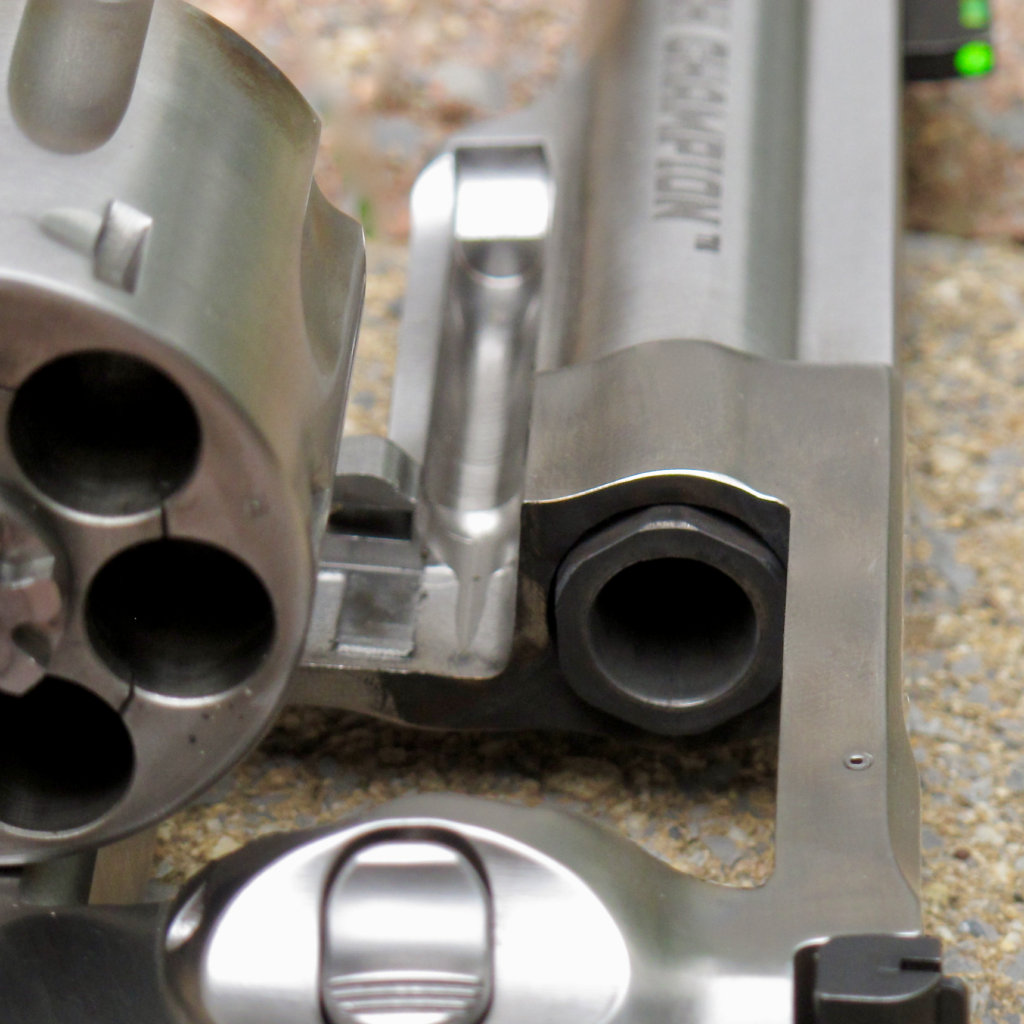
InVisible Differences
You may also recall that I was less than thrilled with the trigger on the .357 Magnum Match Champion. It was pretty gritty. That is not the case with the model I received for this evaluation. The double action trigger is smooth, and even a bit lighter than the last GP I reviewed. The single action trigger is crisp and lacks the superfluous travel I found in the other Ruger. Trigger “smoothness” is hard to quantify, but I am satisfied with this one.
10mm Moon Clips!
Though the cartridges take their headspacing from the case mouth, this revolver is meant to be used with moon clips. The moon clips issued with the 10mm GP100 are fantastic. They are easy to load and unload, even without the use of a moon clip tool, but they still reliably eject the empties. The 10mm GP100 comes with a set of three full moon clips. Additional clips are available from shopruger.com at a reasonable price of $15 for a set of 3.
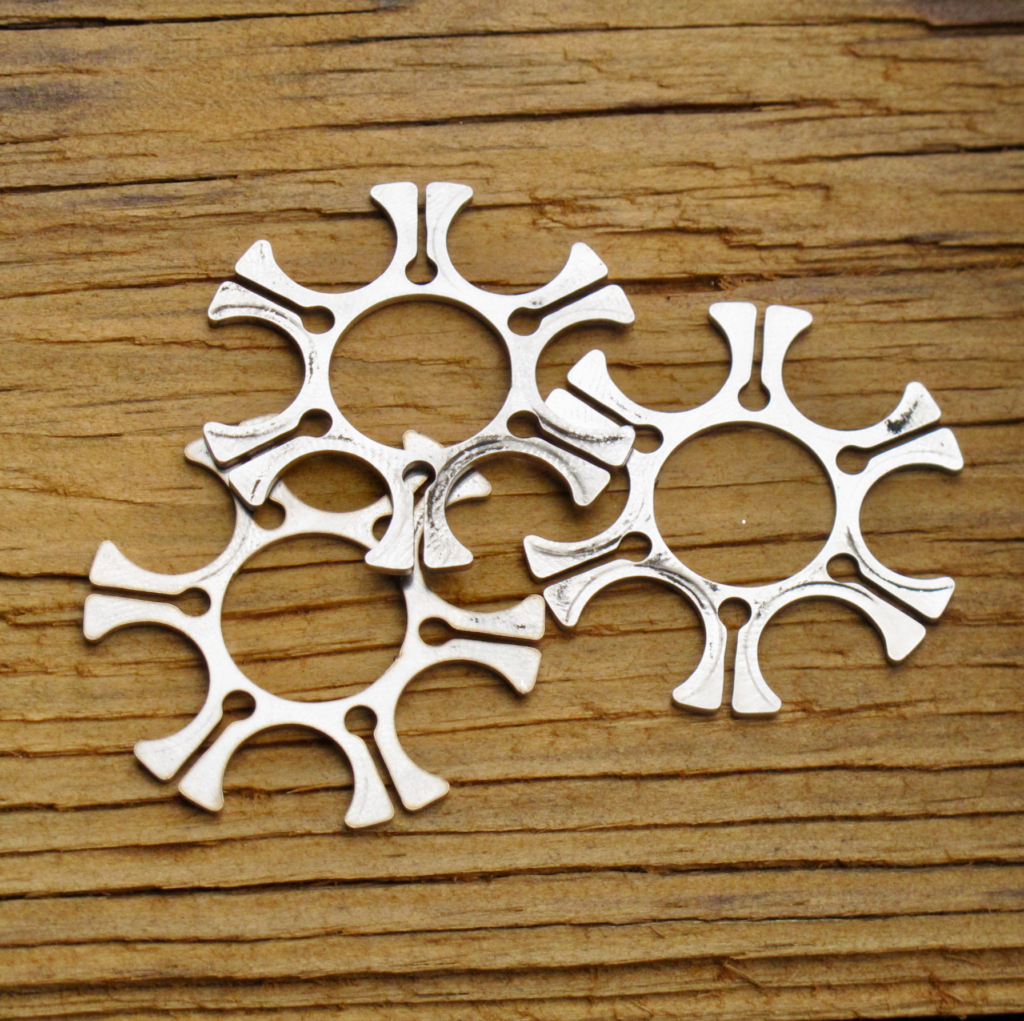
Moon clips present an interesting quandary. They offer the benefit of speedy loading. They also ensure all brass is ejected en mass. Unfortunately, moon clips are hard to carry. Bending one means potentially deadlining your revolver for a little while. Until someone gets around to making a 10mm Auto-Rim, it’s the best we can do, and I’ll be looking at some moon clip carry options in coming months.
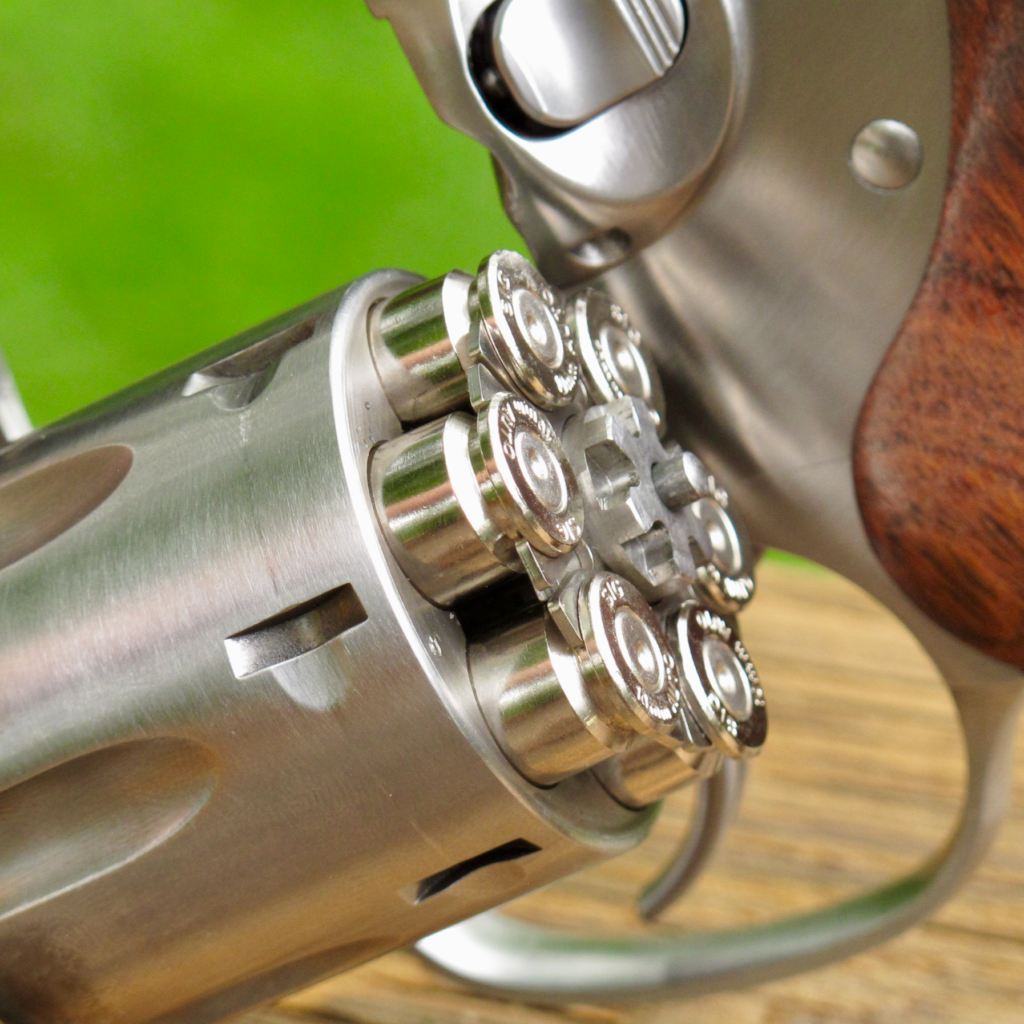
As I mentioned, you can fire this revolver without the aid of moon clips. Part of that bargain is sacrificing the ability to eject empties. The ejector rod simply doesn’t have anything to work against to push the cases out. In the few cylinders I fired in this fashion I found that most of the cases (usually four or five) would fall out when inverting the gun and giving it a good rap on the side of the cylinder. The rest had to be pulled out. Fortunately there is a good amount of case protruding from the cylinder; enough to pull the cases out by hand.
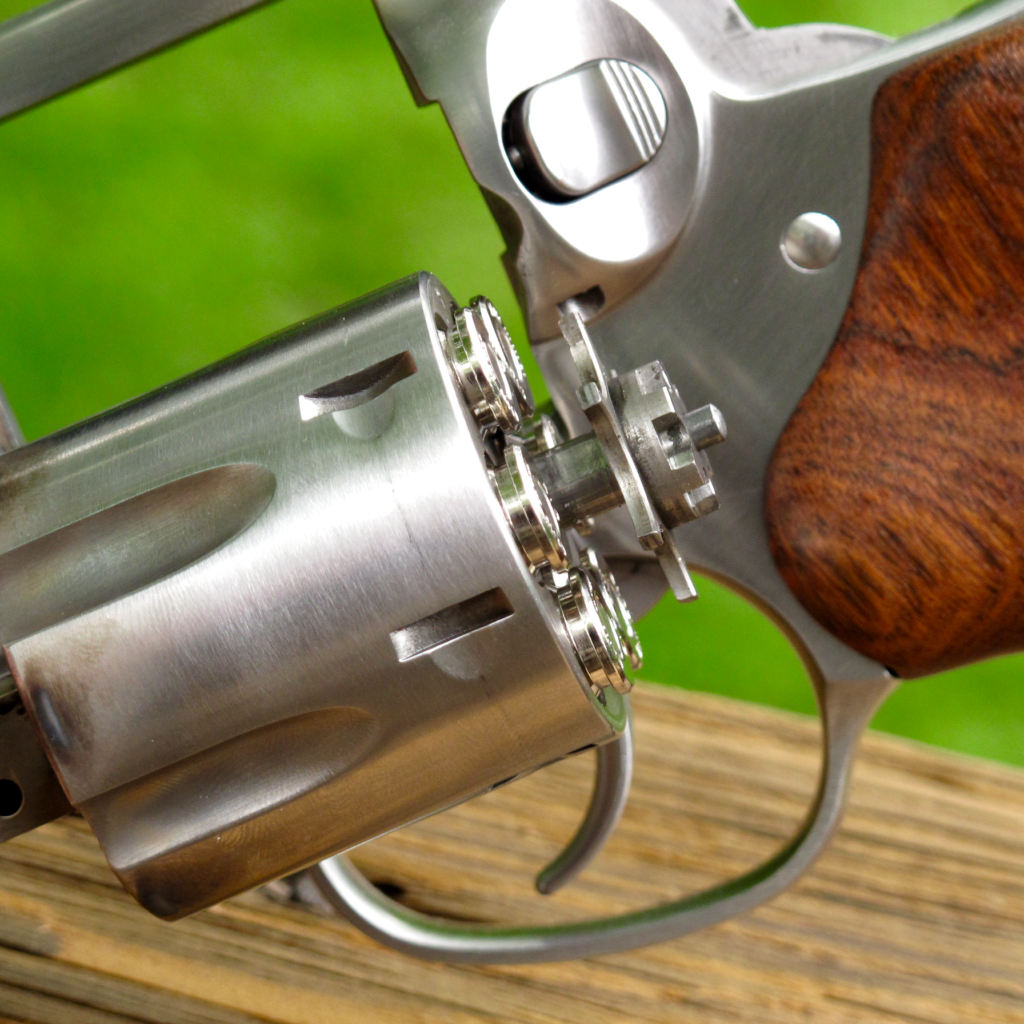
Shooting the Ruger 10mm GP100
I wanted to load up on a dozen different loads for this revolver. Two things prohibited this: cost and time. This article is titled “Part I” and there is a reason for that. I haven’t shot this gun as much as I feel necessary for a full review, but I will follow up on that. We’ve been teasing these new guns for a while and I didn’t want to keep you waiting longer than necessary to get a look at this one.
So, I grabbed what was readily available. I shot the Ruger 10mm revolver with three loads: Federal American Eagle 180-grain FMJ, Sig 180-grain FMJ, and Sig 180-grain V-Crown JHP. I was pleasantly surprised to find that the sights were almost perfectly regulated for the 180-grain loads I chose. I did most shooting in double-action at the 20-yard line. I have no complaints at all and the new, improved sight picture really helped keep groups tight.
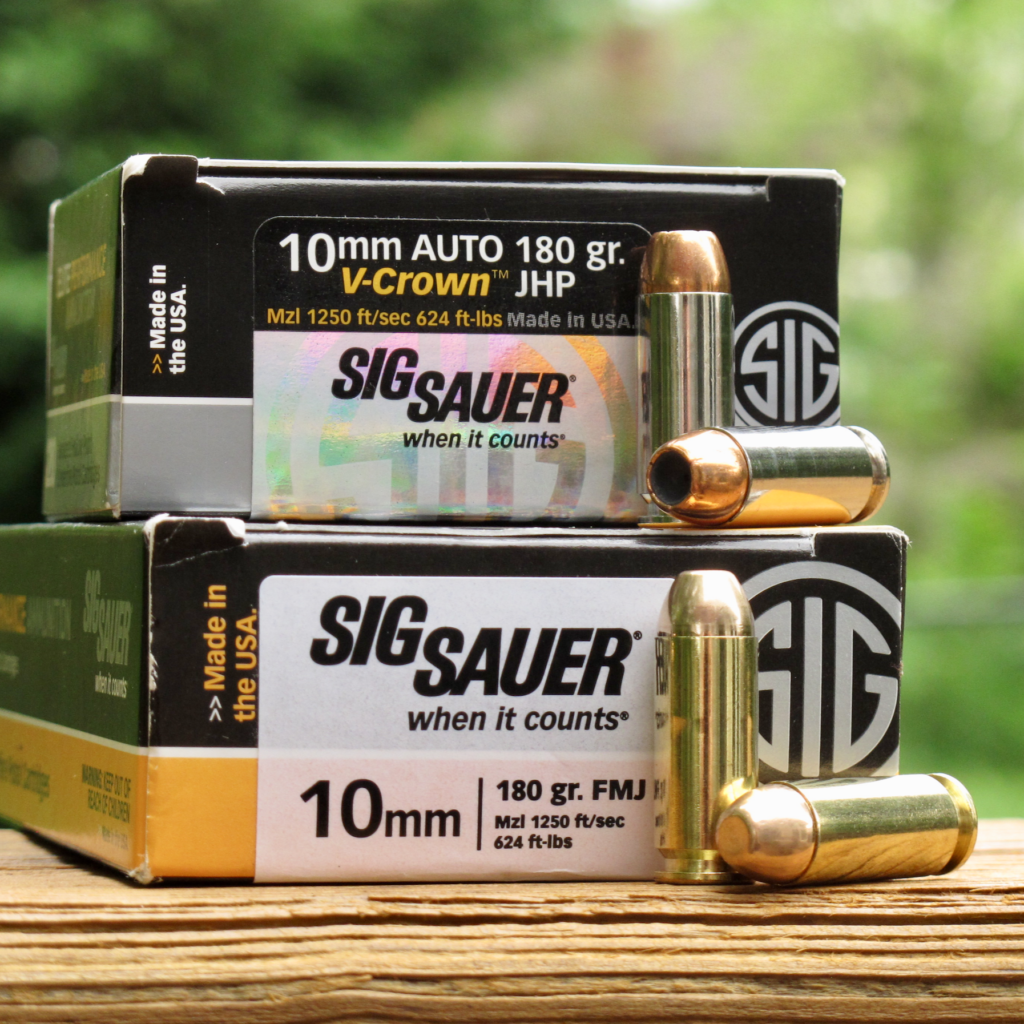
The Federal ammo is loaded to mild plinking levels and was easy to shoot. The Sig stuff, on the other hand, was a bit more brisk. It wasn’t unpleasant by any means; all ammo fired was perfectly manageable in the robust GP100 platform, and I would put it on par with a reasonably hot .357 Magnum. A little get-up-and-go is half the fun of shooting heavier calibers, though, and some heavy stuff from Double Tap is coming soon! The Ruger 10mm functioned perfectly with everything tested so far, which is to be expected.
Part II will follow up on this brief overview. I want to get some bullets over the chronograph and get some real-world numbers. I also want to do some true bench-rest work and get you some information about the gun’s accuracy potential. I may also do a more generalized look at the 10mm Auto, so stay tuned!
Complaints
I don’t have many complaints about this revolver. Overall I am extremely happy with it, and there is nothing inherent in the design that I find fault with. I may eventually swap out the front sight, but overall the Ruger 10mm GP100 has been done right. However, and in the interest of calling it like I see it:
There is an extremely rough spot on the GP’s recoil shield. There are three deep dings and scratches. I’m not sure how this happened since this area is pretty hard to deface without also banging up the cylinder. My guess is that it occurred prior to the gun being assembled and was missed in QC.

This defect doesn’t affect the function of the revolver. It could be stoned out fairly easily, and it wouldn’t stop me from hanging onto this gun. Which leads me to….
The Bottom Line
When I reviewed the .357 Magnum GP back in November, I made a promise. I said that my next full-sized revolver would be a GP100 of some stripe. Today I am going to live up to that promise. The Ruger 10mm GP100 Match Champion is a rock-solid revolver, and I’m not quite ready to let her go back. I will be purchasing this exemplar of the Ruger 10mm GP100.
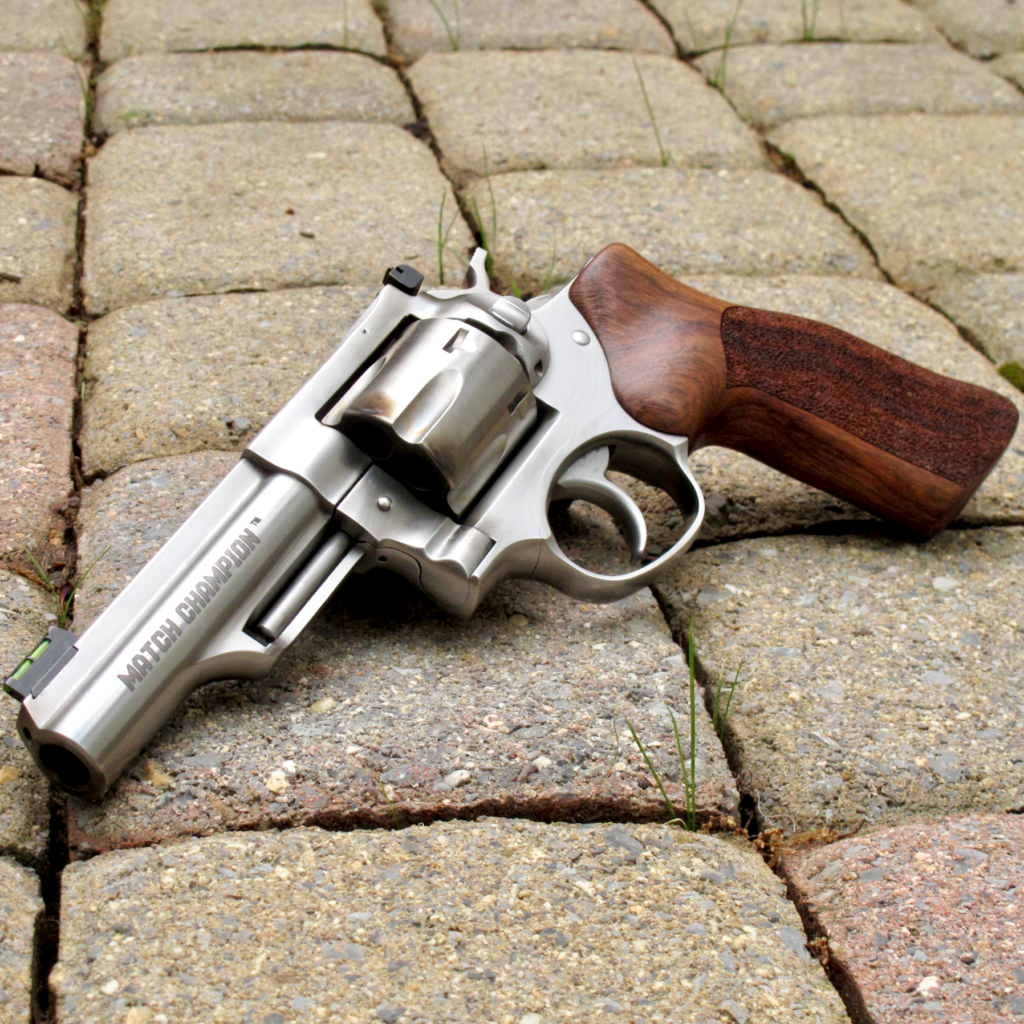
With a little luck (or maybe a lot of luck) you’ll see her this fall in an article about a successful hunting trip. I’ve been planning to start hunting, and this revolver might be the kick in the butt I need to get moving. The 10mm is an incredibly flexible chambering. Properly loaded the Ruger 10mm GP100 should answer the mail for self-defense, hunting, and light predator defense. It’s also a heck of a fun shooter! I want to get some time with ammo that suits all of those needs, as well as running the gun a little more and a little harder. I’ll be back to you with my results, so stay tuned!
P.S. – Sorry I didn’t get too many photos of this gun in her pristine state. I just couldn’t wait to get to the range!

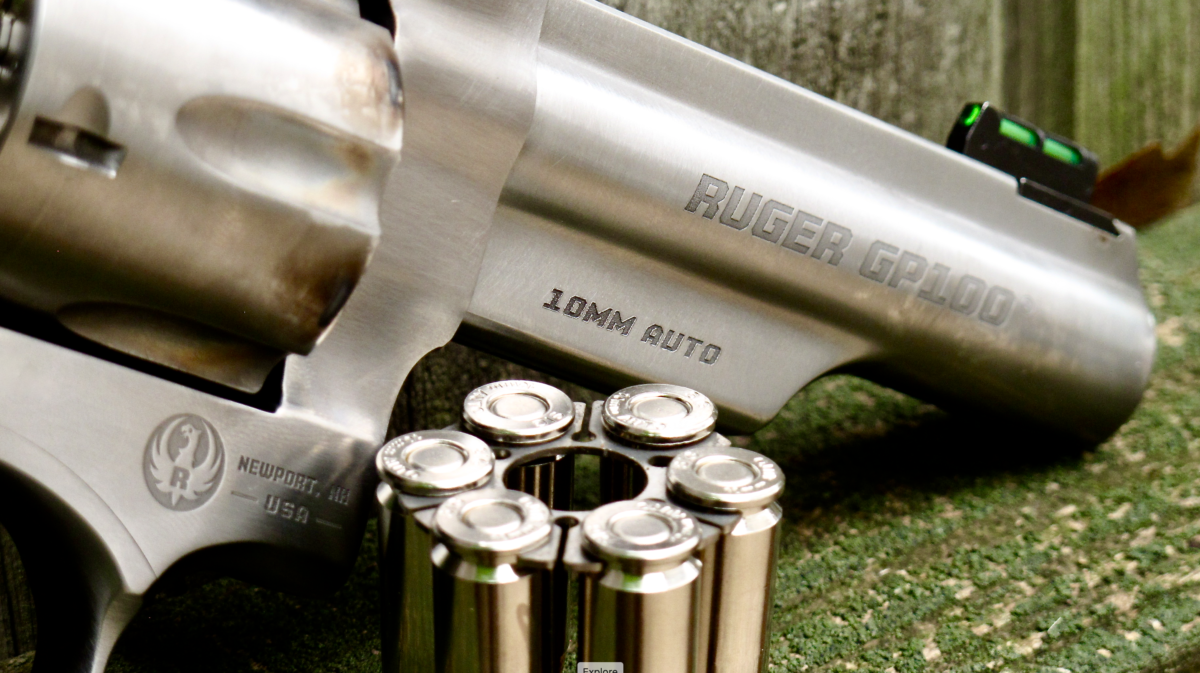
I’ll be interested in your experience when you
start reloading. Because the cartridge headspaces
on the mouth, crimping and making sure the cases
are uniform is a must, I believe. I base this on my
experience in reloading .45 ACP for a Blackhawk.
The result of slightly uneven reloads can be no-go for seating
with or without the moon clip or misfires if the round
seats too deep in the chamber without the moonclip.
Seems like this will be a very versatile gun. Look forward to the next part of the review.
You still require additional penance however. I’d start with a dozen Keith’s and Skeeter’s and a half dozen Jordans. Avoid the temptations my son…
Double check the hunting regs before you take this one out. I suspect you are fine in your area, but in my state, a handgun must fire a cartridge that maintains at least 550 ft/lbs of energy at 50 yards to be legal for big game. You might be able to hand load something that does that, but I have not found a commercial load (including Double Tap and Buffalo Bore) that meets the requirement from a 4 inch barrel.
Since you didn’t mention it, how centered is the hammer on this one? The centering shims didn’t seem to be doing their job on the .357 version, but I am hoping this one is better.
I guess I will let a review of a revolver shooting a semi-auto cartridge redeem you for last week’s article, but you are kind of playing with the line there. 🙂
I guess the Shield article was actually Tuesday, not last week; it just feels like I’ve been waiting a full week.
Law and order every time – that’s me! A 10mm with any mid-grade load is legal for my state.
The hammer on this model is well-centered. When I pulled this revolver out of the box I gritted my teeth before pulling the trigger, but was pleasantly surprised. Everything seems to work like clockwork. Also, as far as that goes I’ve only handled two exemplars, so I’d definitely seek out some other opinions before making a hard decision. Unfortunately most of the “normal” gun reviewers out there seem to mostly be firing revolvers in single-action, so take it for what it’s worth…
Greyson,
The 230-grain WFNGC load from Double Tap Ammo advertises energy in excess of 550 ft-lb at 50 yards from a G20. Of course these are publicized velocities and you’d want to verify them yourself, in your gun of choice.
http://www.doubletapammo.net/index.php?route=product/product&path=303_301&product_id=158
Justin
Interesting. I must have missed that one or it was released after I last checked. Either way, it makes the 10mm more viable than I had thought.
That might have to be my first Ruger wheelgun…
FYI I know Lobo Gun Leather makes a moon clip pouch. I don’t have any experience with that particular product but their holsters are very well made.
Holy wow! Now I’m excited too! I’m curious to know if different bullet weights will shoot to the same point of aim. In my 610 all the rounds I’ve put through from full power 180s to .40 SW 155s seem right on…
I’m convinced that Ruger makes the sturdiest wheel guns around.
Yet given the recent QC issues I’ve read about at Ruger, right on the Ruger forum, I opted for my “ride the river” gun to be a 1996 made GP100 .357 with the Lett grips. I needed better sights up front and really liked things when I swapped the blade for a fiber-optic front sight. It will go into the deer stand this year, along with my Winchester 70.
My BIL and I have both open-carried the GP on the 100 or so acres of family homestead, and it’s had about 500 round through it so far. Whoever owned it before did not shoot it much. It looked new when I inspected it at my local Cabela’s (I ordered it from their Gun Library). With the right belt and holster (Simply Rugged’s Flapjack) it’s not a burden to tote in on the trail.
When you spend time with a GP, you get a sense of why Rugers get their “tanklike” reputation. And after a few hundred rounds, my wife said the trigger was really, really nice. That was her only concern at first. It’s quickly become our favorite wheel gun. No issue with the rear sight pin creeping out, but I’m watching it. Glad they fixed that issue.
Have you tried shooting the .40 Short & Wanting? Given it’s a short version of the 10m/m Norma, it ought to be like shooting .38 Special in a .357 Revolver.
My ‘dislike’ on the .357 Match version was precisely the slabside barrel and the tapered cylinder. Just doesn’t look right in my eyes, especially the cylinder. I looked like a Salvador Dali design that didn’t quite melt. I do, however, wish ALL the 4″ and longer GP 100 were available with the short ejector shroud instead of the full lug.
That aside, my first go with Ruger D/A revolvers was a model 151 Security-Six. It was the low cost alternative, so I thought, to my issued S&W M66. Ended up shooting the Ruger FAR more than the S&W. Always confident that no matter what I stuffed in the cylinder, it would go bang, AND, the gun would hold together. Ruger did cheat a bit on that gun since it was actually counterpart to Colt’s .41 frame (Python/Trooper/Occifer’s Model, etc), so it had a wee bit more beef than the Smith K frame.
Fast forward, when the GP100 came out in stainless, I immediately acquired a 4″ .357 that quickly became my go-to ‘heavy’ revolver, and a 3″ GP, along with a 2.25″ SP101 in .357 that I packed in civilian attire. I put reloads through those guns I wouldn’t have put in a S&W L ( or J ) frame. Major Misconception kept telling me it was my imagination, but to me the GP and SP were so much more heavily built.
The 4″ GP survived the ‘fire sale’ crisis of the last decade, along with a precious few S&W revolvers, and it’s still my favorite double action ‘service’ type wheelgun.
I haven’t, and I’m not sure how I feel about shooting it in a throated chamber(s). Also, most of the mild 10mm (Federal AE, Rem. UMC, etc.) is cruising in the neighborhood of most .40 S&W loads anyhow, so I’m also not convinced of the utility in such an undertaking.
That said I will definitely try it, if for no other reason than to see for myself that it can be done!
I think the niche for this is the competitors who would enjoy the faster reloads. When you’re using moon clips, short cartridges feed better than long ones. I can see a .40S&W moon clip gun giving a competitive edge. I’m interested to hear about your experience in Part Deux!
“.40 Short & Wanting” gave me a chuckle! That original 10mm Norma load you cited was a real handful (I’m not sure if anybody is loading close to it these days?) and made everything that followed (including the FBI load and the .40 S&W) look like squibs!
I agree with you and Justin–the aesthetics on this 10MC are much better than the .357 version.
I like the GP and you’ll be seeing mine in these pages before long. It sounds like I’m in good company with you, Old School Gun Geek, and many others here.
I would like to get my hands on an Occifer’s Model someday. ; ^ )
I don’t want to get too deep into this here (gotta save something for Part II!) but… The old Norma load called for a 200-grain bullet at 1200 FPS. There are a couple manufacturers that I know of (Buffalo Bore and Underwood) that equal that loading, and some of Mike McNett’s loadings (Double Tap) make it look a little slow.
McNett reminds me of Peter Pi in the 80s! He does have some hot stuff in the catalog! Looking forward to your report!
I think the last time I saw a Colt Officer’s Model or even old model Official Police was at a show of the Alabama Gun Collectors Assn in the late 1980s.
You mentioned the short cartridge advantage in competition (where time is everything), made me think of how a K frame moon-clip fed 9m/m would give an interesting reload advantage for IDPA. I know the old S&W 625 in .45 ACP loaded faster than slipping on ice – or at least almost as fast.
Smith & Wesson is making a 5″ L-Frame 9mm called the 986. It’s a Performance Center gun aimed squarely at the competition market, but I think the 7-shot capacity rules it out for IDPA.
I’m not a competition shooter, so maybe one of our competitve RevolverGuys can help me out?
It sounds like that S&W gun could qualify for an IDPA Specialty Division at the club level? It sounds like the 4.25″ barrel length requirement in the IDPA rule book would knock it out of consideration for the REV Division, even before we get to the capacity, but you could shoot it in local SPD?
It looks like it could work for USPSA. Revolver Minor allows you 8 rounds to start with in the gun.
The new Ruger 10MC, being a 6-shooter, looks like it would work in both IDPA (Enhanced Revolver) and USPSA (Minor or Major, depending on your load). IDPA would allow you to shoot .40 S&W in it.
“Have you tried shooting the .40 Short & Wanting?”
The dismissive nicknames for .40 S&W crack me up. Especially because I have never found it “wanting” or “weak” at all.
I’d take a .40 S&W over a 9mm any day, and most certainly over any .38 Special. It’s about as close to the perfect “all-around round” as I’ve found.
Pejoratives aside, the .40 S&W just can’t compete with the velocity and energy potential of the 10mm Auto. That’s just the numbers talking – not me. However I certainly don’t turn my nose up at the .40 S&W. It’s not for me personally but it’s a fine defensive caliber. Whether the additional “power” (for lack of a better word) of the 10mm is necessary or desirable for self defense is a separate debate, I believe.
I think most of the silly nicknames reference the comparison between the two calibers. I also think they are more damning of weakly loaded 10mm ammo, rather than a direct condemnation of the .40 S&W itself.
Agreed. Certainly the 10mm is a superior round in terms of ballistics, and the “big brother” of the .40 S&W. It’s when people demean the .40 in favor of .38, 9mm (or even 45ACP) that I have to shake my head.
But I wouldn’t want this to devolve into a caliber debate – back on topic, the GP100 in 10mm is a seriously formidable firearm. I’m looking forward to a long-term review!
Great review Justin! Ruger continues to amaze with their almost constant releases of firearms almost no one expects. A 10mm GP100 revolver in the Match Champion guise? Unexpected but delightful. In the Ruger tradition, expect this model to hang around for a couple years until the sales slow down and then it will be quietly dropped from the catalog. For those who want one, get it over the next two years before it becomes a collector’s item and the price goes up.
Steve:
You’re absolutely right about “unexpected” catalog additions! A Scout Rifle in .450 Bushmaster? Who’d have guessed that?
Another interesting gun is the new 3″ 10mm “standard” GP100 with Novak night sights. It is a sexy looking wheelgun! Come to think of it, I wouldn’t mind seeing a 5″ gun to squeeze out just a bit more of the 10mm’s velocity potential.
Another “Dubya See” from Ruger! Man, I like what they’re doing with those.
I actually bought the GP100 10mm with the idea of shooting mostly .40 S&W. The 10mm headspaces
off the case mouth, using the moon clip only for extraction. The .40 S&W headspaces off the moon clip and sits deeper in the cylinder, about .015″ further from the firing pin. I got about 50% misfires.
I’m working with Tom from TK Custom on this issue right now, and that will definitely be addressed in my range report on the GP100. I haven’t seen any other bloggers/YouTubers/gun writers mention this problem.
The numbers you got are right in line with what I got: .010″ for the correctly headspaced 10mm, and around .025″ for the .40 S&W.
Hi Revolverguy, my one and only firearm is a Blued 4.2 inch GP100 in 357 and i love it, i am thinking of purchasing this 10 mm variant, but having second thoughts. Is the 10mm substantially more powerful than the 357 magnum? That will pretty much determine my decision other than i prefer a full underlug of the standard GP 100. Also since you have a contact from Ruger, do you know if Ruger is fixing the 7 shot GP 100 in 357? due to the binding issue with some ammos like the blazer 38 specials. Thanks and God bless!!
Rogelio,
The 10mm Auto cartridge handily out-performs the .357 Magnum, even the very heavy loads from Buffalo Bore and the like.
I’ll reach out to Ruger and see what we can find out about the 7-shot GP100.
Justin
Thanks Justin, Take care and God Bless!!
Rogelio, welcome to RevolverGuy! As Justin mentioned, the full power 10mm (not the reduced velocity “FBI 10” around 950 fps, but the original, full power flavor around 1200 fps) is indeed more capable than the .357 Magnum. In traditional revolver terms, it’s closer to a .41 Magnum than a .357 Magnum, particularly when you look at the more vigorous offerings from places like DoubleTap and Buffalo Bore.
Regarding the GP100 issue, it’s regrettable that the new 7-shot guns won’t work with all brands and SKUs of ammunition, but this problem of not having enough rim clearance to fit 7 rounds in the cylinder is easily solved by picking ammo that’s known to work. It appears that the majority of ammunition out there will fit in the new 7-shot cylinder without interference, so we can fix it without much drama.
There’s some variation in cartridge dimensions from make to make, and sometimes from lot to lot. The SAAMI specs all have a tolerance associated with the various dimensions like rim diameter, so sometimes the stacking tolerances will create a problem like this. The autopistol shooters are familiar with this problem, and often have to be picky about what they feed their guns. If you’ve ever owned a semiauto .22LR rifle or pistol, you know the drill, too. It sounds like the 7-shot GP100 is in the same boat. No worries, it’s easy to fix.
There’s no free lunch, and if you want to stuff 7 rounds in a cylinder that was designed for 6, then you have to accept the tradeoffs that come with it. Ruger stayed with the same frame for this gun, because it would have been too expensive to build a new frame for the 7-shot version. The frame dimension is what drives the measurement from the center of the cylinder to the center of each chamber, and since this couldn’t change on the 7-shot (for economy), you wind up with chambers that are spaced closer together. The cartridge rims that live on the high end of the SAAMI specs are going to have a tough time fitting. It’s a tradeoff to get that 7th round.
Thanks for the info! Now that means Im going to buy the 10mm Match Champion then. I was switching back and forth between the 7 shot and the 10mm. Once the 10mm arrives here in Kalifornia I will be purchasing it. God bless you all and thanks again!